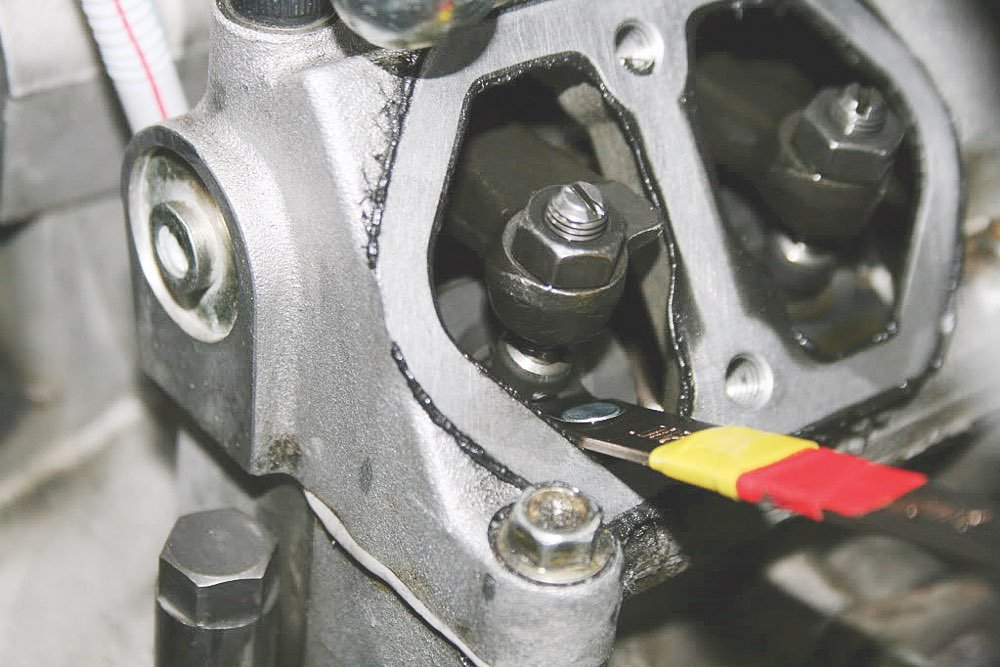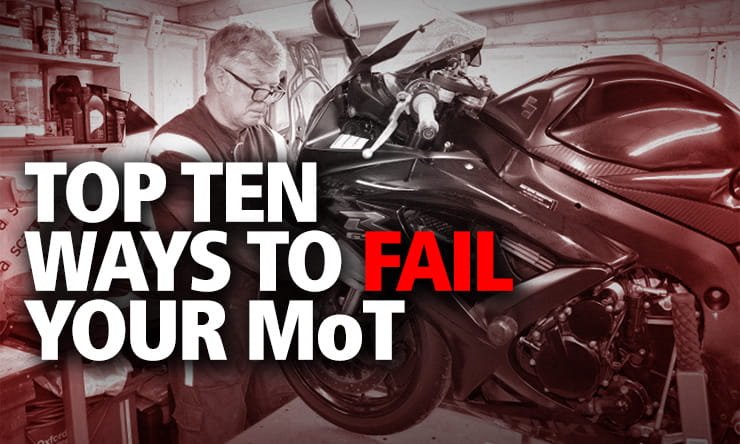Motorcycle valves that are out of adjustment can lead to performance issues and engine damage. Incorrect valve clearance affects combustion, power output, and longevity of the engine.
Maintaining proper valve clearance is important for motorbike performance and durability. Out-of-spec valves may cause various symptoms, from rough idling to a notable decrease in engine power. Riders may also experience difficult starts and irregular acceleration, as the engine struggles to manage airflow efficiently.
Regular maintenance, including valve adjustments, ensures the motorcycle operates smoothly. It also maximizes fuel efficiency and prevents premature engine wear. Motorcycle enthusiasts must prioritize valve adjustments in their service schedule to avoid costly repairs and to keep their rides in top condition.
Properly adjusted valves contribute to a well-tuned and high-performing engine, enhancing the overall riding experience.
Table of Contents
Significance Of Valve Adjustment In Motorcycles
The health of your motorcycle’s engine hinges significantly on valve adjustment. Precise valve adjustment ensures the smooth operation of the engine. It directly impacts the bike’s performance, power delivery, and longevity.
Role Of Valves In Engine Performance
Valves are critical to the optimal functioning of a motorcycle’s engine. They manage fuel and air flow into the engine and exhaust out of it. When these valves are correctly adjusted, the engine experiences peak performance and efficiency. Conversely, improperly adjusted valves can lead to a host of issues, such as:
- Loss of engine power
- Erratic performance
- Increased fuel consumption
- Potential engine damage over time
Recommended Maintenance For Valve Adjustment
Maintenance schedules for valve adjustments vary between motorcycle models. Manufacturers typically suggest specific intervals for checking and adjusting the valves. This schedule may depend on the following:
| Mileage/Hours | Service Type |
|---|---|
| Every 15,000 miles | Inspection |
| Every 30,000 miles | Adjustment |
Owning a motorcycle involves a commitment to regular maintenance. Adhering to the recommended valve adjustment schedule is a small precaution for major benefits. It ensures your motorcycle performs effectively and stands the test of time. Otherwise, expect to see the following:
- Reduce engine lifespan
- Compromise on safety
- Incur higher repair costs

Credit: tech.bareasschoppers.com
Symptoms Of Incorrect Valve Adjustment
Motorcycles rely on precise valve adjustments for optimal performance. Valves control airflow in and out of the engine. When these are out of alignment, a range of symptoms can emerge. It’s crucial to recognize these signs early to prevent further engine damage.
Engine Noise And Ticking Sounds
Loud engine noises or ticking sounds often signal valve problems. These sounds stem from the valve and tappet clearance being too loose or tight. Let’s explore the implications:
- Too tight: The valves might not fully close. This can cause engine overheating.
- Too loose: The engine makes a ticking noise. Excessive clearance leads to wear and potential damage.
Riders might hear ticking when starting the bike or during a ride.
Hard Starting Or Poor Idle
Struggling to start or a fluctuating idle can be frustrating. Incorrect valve adjustment often leads to these issues. The engine might take several attempts to start. Once running, it might idle roughly or stall. Let’s break down the reasons:
| Condition | Possible Cause |
|---|---|
| Hard starting | Valves are not opening and closing properly at the correct times. |
| Poor idle | Irregular air-fuel mixture disturbs engine rhythm. |
These symptoms reveal the engine’s struggle for efficiency and balance.
Results Of Neglecting Valve Maintenance
Regular valve maintenance is essential for optimal performance. Valves control the airflow to the engine—a critical task. Neglecting this vital aspect can lead to trouble. Below we dive into what happens when motorcycle valves aren’t adjusted properly.
Loss Of Engine Power And Efficiency
When valves are not adjusted right, your motorcycle’s engine won’t perform at its best. You might notice it feels lackluster when you’re out for a ride. Improper valve clearance means the engine has to work harder. This extra strain reduces both power and efficiency.
Let’s check the potential effects:
- Decreased fuel efficiency: Your bike consumes more fuel than usual.
- Poor acceleration: It struggles to pick up speed quickly.
- Engine misfires: A jerky ride is often the result of bad valve clearance.
Potential For Severe Engine Damage
Long-term disregard for valve adjustments can be catastrophic. The stress on valve components can lead to serious engine problems. Precise timings keep the engine in sync. Out-of-synch valves have dire consequences:
| Part Affected | Type of Damage | Outcome |
|---|---|---|
| Valves | Bent or broken | The engine won’t run. |
| Piston | Collision with valves | Extensive repair needed. |
| Camshaft | Increased wear | Premature failure. |
Ignoring valve adjustments is akin to inviting engine failure. Regular checks ensure longevity for your motorcycle’s heart—the engine.
How To Adjust Motorcycle Valve
Over time, a motorcycle’s engine valves require tuning to perform seamlessly. Properly adjusted valves ensure the engine runs smoothly, reduces wear, and maintains power efficiency.
Tools Required For Valve Adjustment
Valve adjustment requires specific tools to ensure a precise and safe procedure:
- Feeler Gauge: Measures valve clearance.
- Wrench Set: Assists in removing engine parts.
- Screwdrivers: Helps in adjusting the valves.
- Socket Set: For nuts and bolts of various sizes.
Step-by-step Guide For Adjusting Valves
Follow this guide for a smooth valve adjustment process:
- Engine Cooling: Ensure the engine is cool before you start.
- Cover Removal: Take off the necessary covers to access the valves.
- Position Engine: Turn the engine to bring the piston to top dead center (TDC).
- Check Clearance: Use the feeler gauge to measure clearance.
- Adjust if Necessary: Adjust the valves as per the manufacturer’s specs.
- Double-Check: Re-measure to ensure accuracy.
- Reassemble: Put all covers and parts back in place.
Each step is important in maintaining your motorcycle’s performance. Regular valve adjustments prevent future engine issues and keep your ride smooth.
Real-world Impact Of Valve Adjustment
Valve adjustment influences the entire riding experience. Regular valve adjustments are key to maintaining engine performance and longevity.
Performance Improvements After Adjustment
Right after a valve adjustment, several enhancements become clear:
- Better fuel efficiency: Proper valve alignment ensures optimal fuel consumption.
- Increased horsepower: With more precise valve timings, engines can produce more power.
- Smooth idling: Eliminates rough idles and provides a smoother ride.
- Reduced emissions: Properly adjusted valves reduce pollutant emissions.
Case Studies: Before And After Maintenance
Seeing is believing. Studies reveal the impact of valve adjustments:
| Bike Model | Before Adjustment | After Adjustment |
|---|---|---|
| Brand X Cruiser | Noisy engine, poor power output | Quieter operation, visibly increased torque |
| Brand Y Sport | Irregular idle, high fuel consumption | Stable idling, noticeable fuel savings |
These examples show clear benefits from valve adjustments, from sound to savings.
Professional Vs. Diy Valve Adjustment
Motorcycle valves that are out of adjustment can lead to a variety of engine issues. These range from minor annoyances to significant malfunctions. Understanding the nuances of professional and DIY valve adjustments is vital for motorbike owners. Many riders weigh the pros and cons of each approach. While one may save time, the other might offer a more cost-effective solution.
When To Seek Professional Help
Some signs that it’s time to contact a mechanic include unfamiliar noises from the engine, difficulty starting the bike, and decreased performance. These symptoms may indicate that valve clearances need expert attention.
- Complex Engine Layouts: If the bike has a complex design, professional help ensures accuracy.
- Limited Tools: Specialized tools are required for this job. Mechanics have these tools.
- Lack of Experience: If unsure about the process, a professional can prevent costly mistakes.
Tips For The Diy Enthusiast
DIY valve adjustment is a satisfying project for many bike owners. Here are some tips for those ready to take on the task:
- Research Beforehand: Read the motorcycle’s manual thoroughly for specific instructions.
- Gather Necessary Tools: Basic tools include a feeler gauge, wrenches, and screwdrivers.
- Logically Organize Parts: Keep track of all parts to ensure easy reassembly.
- Check Valve Clearances Regularly: Making adjustments becomes easier with practice.
Remember: Patience is key. Mistakes can lead to severe engine damage.
FAQ
How Do Misadjusted Valves Affect Engine Performance?
Misadjusted valves can lead to a loss of engine performance. They cause poor fuel efficiency, reduced power, and can make starting the engine more difficult. Over time, this may also result in increased engine wear.
What Are Symptoms Of Incorrect Valve Adjustment?
Symptoms include noisy valve train, engine misfire, reduced acceleration, and uneven idling. Often, there will be a noticeable drop in engine power and fuel economy, signaling a need for valve adjustment.
Can Valve Adjustment Improve Motorcycle Mileage?
Proper valve adjustment can improve mileage. It ensures optimal engine breathing and combustion, leading to better fuel efficiency. Thus, correctly adjusted valves contribute to a smoother running and more economical motorcycle.
Will Valve Adjustment Prevent Engine Damage?
Yes, proper valve adjustment can prevent engine damage. It maintains correct valve clearance, avoiding excessive wear and potential engine malfunction. Regular adjustments are crucial for the longevity of your motorcycle’s engine.
Bottom Line
Maintaining your motorcycle’s valve clearances is essential for the highest performance and engine longevity. Neglecting this key maintenance task can lead to a host of problems, from reduced efficiency to potentially costly engine damage. Timely adjustments ensure a smooth ride, peak power, and fuel efficiency.
Keep your engine running strong. Prioritize valve health for a stalwart road companion.




Leave a Reply